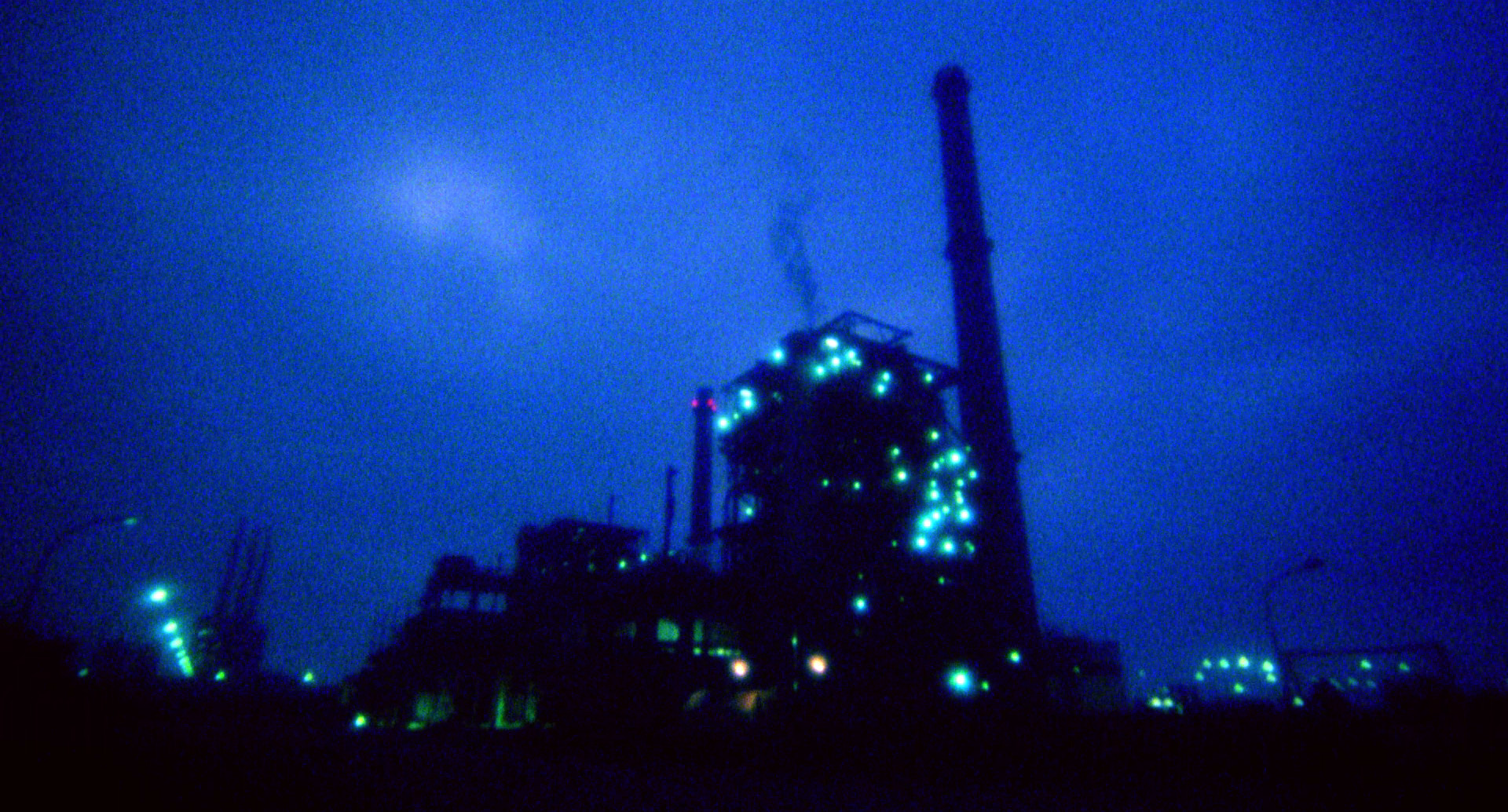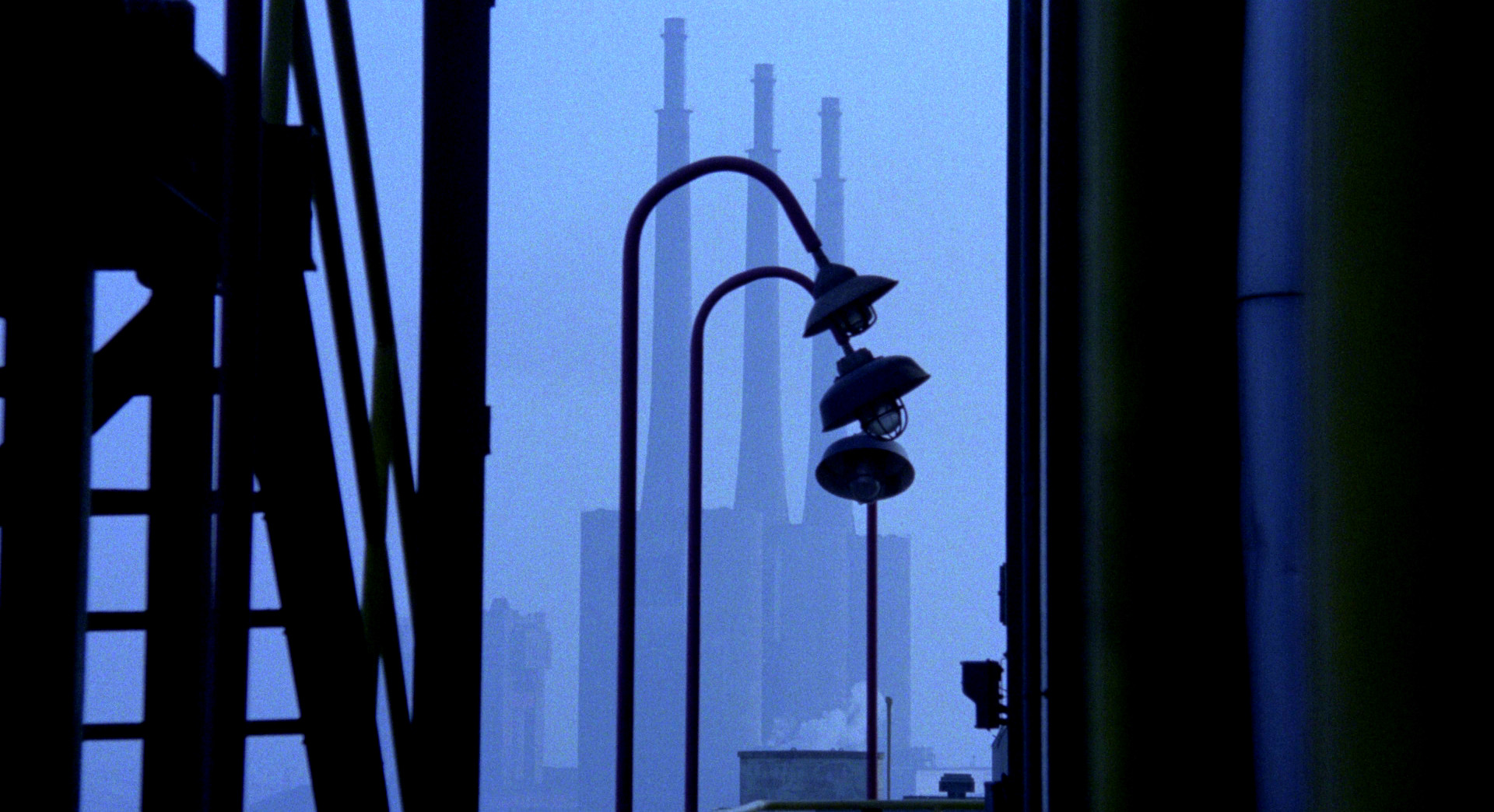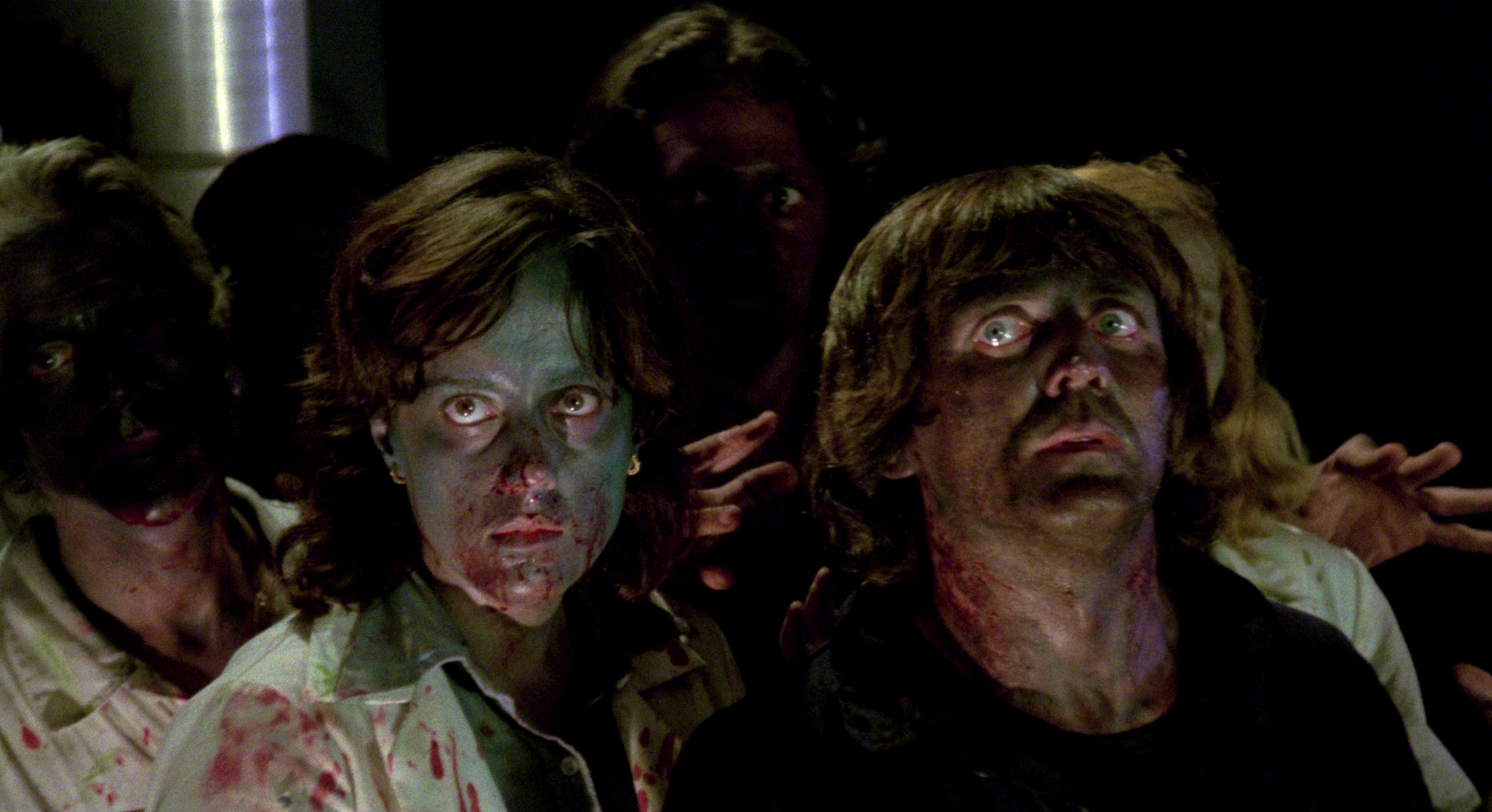In the opening act of Bruno Mattei’s oft-maligned 1980 zombie opus Hell of the Living Dead (né Night of the Zombies né Zombie Creeping Flesh né Virus) a cell of violent eco-terrorists demand the dismantling of the HOPE project, a global humanitarian effort that has established HOPE Centers throughout the third world. It may have taken a while, but between 2003 and 2011 their demands were met.
Sort of…
Hell of the Living Dead, being a co-production between Mattei’s Beatrice Film s.r.l. and Spain’s short-lived Films Dara, spent a good deal of its production shooting in and around the city of Barcelona, with many of the exteriors (and, likely, interiors) from its first and final acts completed at the central termica del Besos complex; a sprawling electrical plant on the delta of the Rio Besos that doubles as the film’s Papuan HOPE Center.
Hell‘s opening image, an ominous wide-angle shot of an industrial facility at dusk, is a view northward from the southwest corner of original Besos plants I and II (the latter in the foreground), a pair of 150MW conventional steam turbine groups that were in operation from 1967 (1972 for II) to 2003. Images from around the time of filming are hard to come by, at least in my hunting, though a brief documentary report – Inauguracio de la Central Tèrmica del Besòs, dir. Joan Capdevila Nogués (available at archive.org) – does show a similar angle of Besos I, circa its official inauguration in August of 1968. That film is the source of this article’s header image.
The Besos I and II facilities were deactivated and dismantled beginning in 2003, a year after the 400MW Besos III and IV groups went on-line. Their demolition was completed in July of 2007, with the felling (by 30 kilos of Goma-2 explosives) of the grouping’s 394-foot-tall chimney.
In the background left of that same opening shot, looking uncharacteristically small, is a veritable symbol of 20th century Catalonian power generation, las tres chimeneas – then the central termica de Sant Adria. This trio of 350MW generator groups was practically new at the time of Hell of the Living Dead‘s production, having been brought on-line (from back to front in the image below) in 1973, ’74, and ’76, and appear occasionally in the background of the picture. One notable telephoto shot of them, seen through some lamp posts, appears late in the film.
It’s a shame they weren’t utilized more by the production, as their brutalist concrete construction is monolithic and imposing on a whole other scale from Besos plants I and II. At a height of 200 meters – 656 feet – the structures tower over the surrounding urban landscape of Sant Adria de Besos, and have become iconographic in the 50 years since they were constructed. Rendered obsolete by the activation of Besos V (an 859MW capacity combined cycle plant) in 2010, fully deactivated by 2011 and initially slated for total demolition, the town hall of Sant Adria de Besos (with considerable popular support) instead opted to preserve the three chimneys as a piece of the area’s unique cultural and industrial heritage.
Though Besos I and II are long gone and the three chimneys have stood long enough to have become nostalgic local iconography, some irony arrives by way of the Mattei film and the less charitable aspects of the plants’ own histories. The HOPE Centers of Hell of the Living Dead are said to have been constructed for the betterment of the third world nations they inhabit, but this is just a smokescreen. In the world of the film they are instead the machinations of an insidious multinational conspiracy to resolve the perceived crisis of overpopulation through mass extermination, an experimental program in mad science that aims for genocide and births the apocalypse. After a critical failure in one of its modules leaves its workers dead, dying, or worse, the Papuan HOPE Center spews green clouds of noxious gas out into the surrounding countryside, poisoning all who dwell there and raising the dead to eat the living.
By grim contrast central termica del Besos I and II and, especially, the central termica de Sant Adria were locally notorious in their own time for their pollution of the city around them. While towers I and III were converted in the 1980’s to also burn natural gas the central chimney of Sant Adria, which ran only in times of peak demand, burned fuel oil. In the ’00s Sant Adria II became synonymous with ferrous “black rain” and with the persistent soot that afflicted nearby property, a fact that inspired official investigation and forced the plant’s closure in 2002. There are few images to be found online of it as it was known then, when it was often marred black by the oil it burned. It feels appropriate, if a bit hyperbolic, that it be immortalized as a source of deathly zombifying emissions in a cult horror picture.
A tour of central térmica de Sant Adria del Besos, from 2008 (when facilities I and III were still operating), is below:



